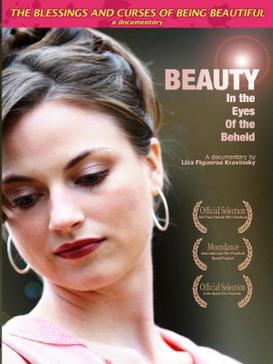Beauty: In the Eyes of the Beheld
Beauty: In the Eyes of the Beheld is a concept that explores the subjective nature of beauty and how it is perceived differently by individuals. The phrase "in the eyes of the beholder" suggests that beauty is not a universal standard but rather a personal experience that varies from person to person.
Definition and Origins[edit | edit source]
The idea that beauty is subjective and varies between individuals can be traced back to ancient philosophers. The most famous reference comes from the 3rd century BCE Greek philosopher Plato, who discussed beauty in terms of its observer-dependent nature. However, the exact phrase "beauty is in the eye of the beholder" is often attributed to the 18th-century Irish author Margaret Wolfe Hungerford in her book "Molly Bawn."
Cultural Perspectives[edit | edit source]
Different cultures around the world have their own standards and ideals of beauty, which can be influenced by historical, social, and economic factors. For example, in some cultures, beauty is associated with physical attributes such as skin color, body shape, or facial features, while in others, beauty encompasses qualities such as grace, charisma, or moral virtue.
Psychological Aspects[edit | edit source]
From a psychological standpoint, the perception of beauty involves cognitive processes, including attention, interpretation, and memory, which are influenced by personal experiences, cultural background, and societal standards. Studies in the field of psychology and neuroscience have shown that people's perceptions of beauty are also affected by innate preferences, such as symmetry and proportion.
Impact on Society[edit | edit source]
The subjective nature of beauty has significant implications for society, particularly in the realms of media, advertising, and fashion. These industries often promote narrow standards of beauty, which can affect individuals' self-esteem and body image. The movement towards inclusivity and diversity in these industries reflects a growing recognition of the broad spectrum of beauty.
Contemporary Discussions[edit | edit source]
In recent years, there has been a shift towards recognizing and celebrating diversity in beauty standards. Social media and digital platforms have played a crucial role in challenging traditional notions of beauty and promoting a more inclusive approach. Discussions around body positivity and the representation of various body types, skin colors, and physical abilities are central to contemporary debates on beauty.
Conclusion[edit | edit source]
"Beauty: In the Eyes of the Beheld" underscores the complexity of beauty as a concept that cannot be universally defined. It highlights the importance of acknowledging and respecting individual differences in perceptions of beauty. By embracing a more inclusive approach, society can move towards a more accepting and diverse understanding of beauty.
Navigation: Wellness - Encyclopedia - Health topics - Disease Index - Drugs - World Directory - Gray's Anatomy - Keto diet - Recipes
Search WikiMD
Ad.Tired of being Overweight? Try W8MD's physician weight loss program.
Semaglutide (Ozempic / Wegovy and Tirzepatide (Mounjaro / Zepbound) available.
Advertise on WikiMD
WikiMD is not a substitute for professional medical advice. See full disclaimer.
Credits:Most images are courtesy of Wikimedia commons, and templates Wikipedia, licensed under CC BY SA or similar.Contributors: Prab R. Tumpati, MD

